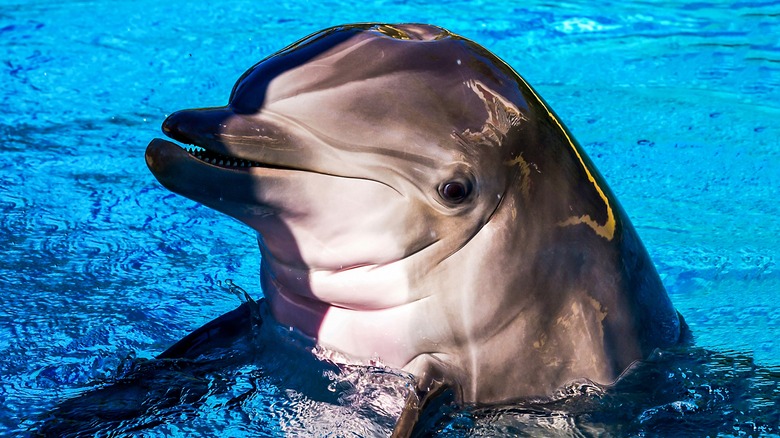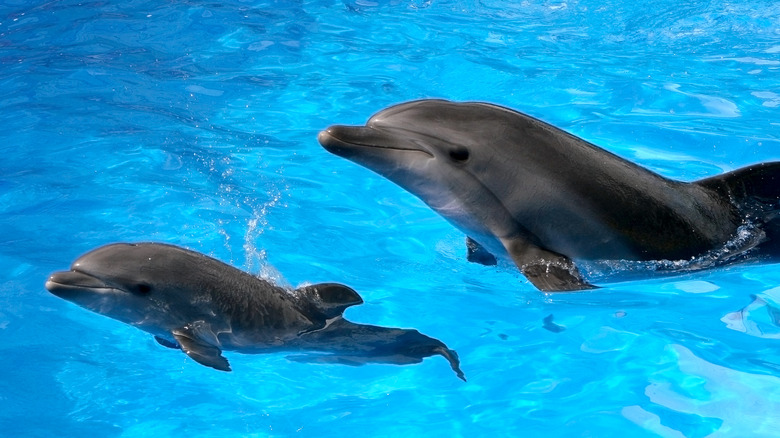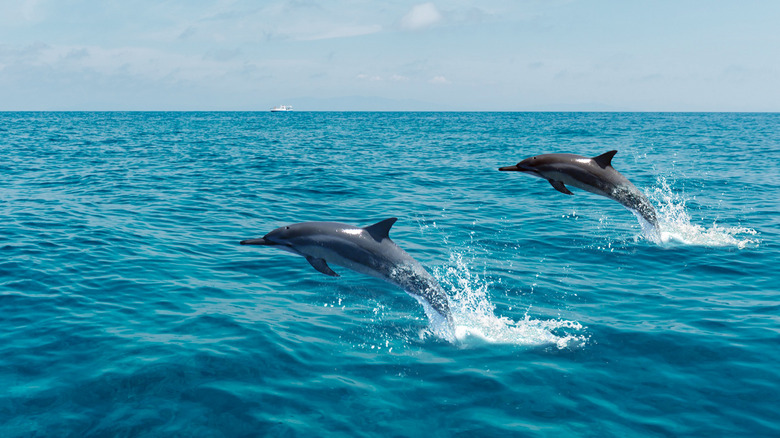The Unusual Way Dolphins Give Birth
Dolphins are famed for their intelligence, and rightly so. According to Whales & Dolphin Conservation USA, they are one of a very select group of species that can pass the so-called mirror test: When presented with their reflection, they're reportedly able to recognize that they're looking at themselves, and will examine their bodies and/or use the information accordingly.
The Irish Times reports that humans themselves do not pass this self-awareness study until the age of around 2 years old, which speaks volumes about dolphins and just how intelligent they are. Animal lovers around the world are acquainted with the playful and brainy nature of dolphins, but there's much more to these intriguing creatures than their smarts.
According to Britannica, there are dozens of dolphin species; most of them measure about 10 feet in length. These marvelous mammals have a unique way of giving birth, quite unlike many similar species. As adorable baby dolphins come into the world, they have quite a bumpy ride.
One calf at a time
According to Animal Wised, the mating habits of dolphins share some characteristics with other mammals. Ovulating female bottlenose dolphins can be impregnated by males, whereupon the baby (or calf) develops in the female's womb.
Whale & Dolphin Conservation USA adds that the duration of the pregnancy varies, depending on the species. For an orca — sometimes referred to as a Killer Whale, but actually a type of dolphin — it's a mammoth average of around 18 months, while for bottlenose dolphins it tends to take about a year.
Fish and other aquatic species have a variety of intriguing ways of bringing their young into the world. As Thierry Lodé writes in the paper "Oviparity or viviparity? That is the question..." (via Science Direct), "embryonic development ... occur[s] inside ... the ventral pouch of the male seahorse." A seahorse can birth up to 2,000 babies at one time, according to National Geographic, but the dolphin will give birth to only one calf.
Not backwards in coming forward
A dolphin calf, Whale & Dolphin Conservation USA goes on, tends to be born "backwards," or tail-first. This could be considered the equivalent of the breech position in humans (bottom-first), but it isn't usually problematic. In fact, this position is advantageous for dolphins.
Quite understandably, underwater births can be complicated affairs. By emerging from the tail to the snout, there's less danger of the calf drowning as it adapts to its environment during those first crucial moments.
When caring for young, it seems that dolphins are as empathetic, gentle and perceptive as expected. In August 2014, The Northern Advocate shared the story of Kiwi the bottlenose dolphin, which "adopted" Pee-Wee, a baby common dolphin, after Kiwi's own calf was believed to have died in 2009. The pair were spotted near Onewhero Bay, New Zealand, with Pee-Wee feeding from Kiwi. Jo Halliday, an authority on marine mammals, reported that Kiwi didn't seem to have produced another calf since, but was able to feed Pee-Wee nonetheless.
There are "so many things these guys are capable of doing," Halliday stated of the remarkable and rare event, per The Northern Advocate. "They may be able to switch on lactation on demand."


